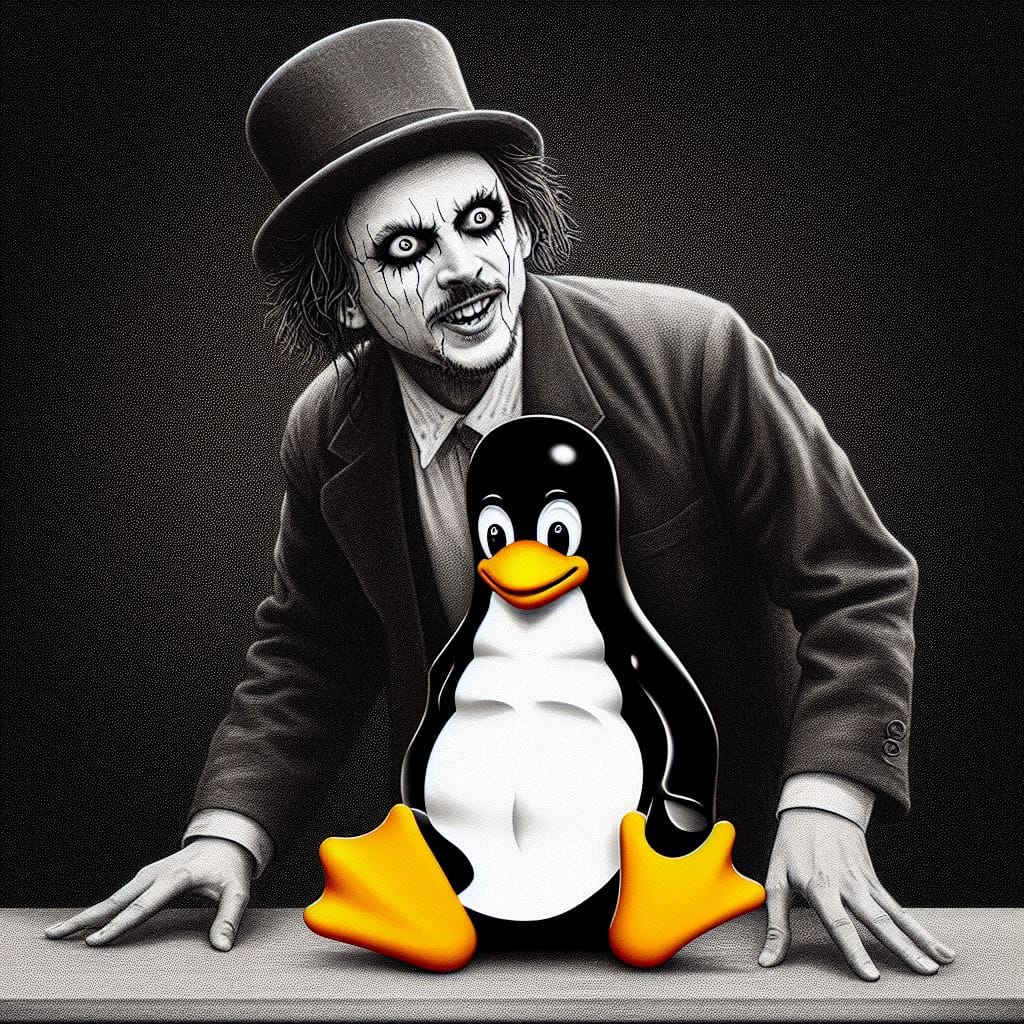The Definition of Insanity on Linux

Insanity is a term that is often used to describe a state of mind that is irrational, illogical, or abnormal. But what does it mean to be insane on Linux, the open-source operating system that powers millions of devices around the world? Is it possible to go mad while using Linux, or is Linux itself a product of madness? In this article, we will explore some of the aspects of Linux that could be considered insane, as well as some of the benefits and drawbacks of being a Linux user.

The Insanity of Choice
One of the most distinctive features of Linux is the amount of choice it offers to its users. Unlike other operating systems that have a single, fixed interface and set of applications, Linux allows users to customize almost every aspect of their system, from the kernel to the desktop environment, from the text editor to the web browser, and from the file manager to the music player. There are hundreds of Linux distributions, each with its own philosophy, design, and features, and thousands of software packages, many of which are free and open-source, that can be installed and configured according to the user’s preferences.
This freedom of choice can be seen as a blessing or a curse, depending on the user’s perspective. On one hand, it can be empowering and liberating, as it enables users to create a system that suits their needs, tastes, and values, and to experiment with different options and alternatives. On the other hand, it can be overwhelming and frustrating, as it requires users to make a lot of decisions, to learn a lot of technical details, and to deal with a lot of compatibility and dependency issues. Some users may enjoy the challenge and the diversity (is this where the insanity starts?), while others may prefer the simplicity and the uniformity of other operating systems.
But what if the user is not satisfied with any of the existing choices, or wants to create something new and unique? Well, Linux also allows users to create their own distributions, or modify existing ones, by changing the source code, adding or removing packages, or tweaking the settings. This can be seen as the ultimate expression of choice and creativity, or the ultimate sign of insanity. As the villain of Far Cry 3, Vaas Montenegro, famously said: “Do you know the definition of insanity? Insanity is doing the exact same thing over and over again, expecting things to change. That is crazy.”
But what if the user does the exact opposite thing, changing things over and over again, expecting things to stay the same? That is also crazy. And that is what some Linux users do, when they constantly switch, tweak, or create distributions, hoping to find the perfect one, or just for the sake of it.
The Insanity of Command
What could be considered insane is the use of the command line, or the terminal, as a primary way of interacting with the system. The command line is a text-based interface that allows users to enter commands and instructions to perform various tasks, such as navigating the file system, managing processes, installing software, editing files, and so on. The command line is often faster, more powerful, and more flexible than graphical user interfaces (GUIs), as it can execute complex operations with a few keystrokes, automate repetitive tasks with scripts, and access low-level system functions.
However, the command line can also be intimidating and daunting, especially for beginners and casual users, as it requires users to memorize a lot of commands, syntax, and parameters, to type accurately and precisely, and to understand the feedback and error messages. The command line can also be dangerous and destructive, as it can execute irreversible actions, such as deleting files, formatting disks, or changing system settings, without any confirmation or warning. Some users may appreciate the control and the efficiency of the command line, while others may find it scary and inconvenient.
But what if the user is not afraid of the command line, or enjoys using it? Well, Linux also allows users to do almost anything with the command line, even things that are not meant to be done with it, or that are better done with GUIs.
For example, some Linux users like to browse the web, watch videos, play games, or listen to music, using only the command line, or using text-based or minimalist applications that run on the terminal.
This can be seen as a fun and challenging way of using the system, or a ridiculous and pointless way of wasting time and resources. As the saying goes: “Just because you can, doesn’t mean you should.” But some Linux users do, because they can, or because they want to prove that they can.
The Insanity of Community
Finally, what else could be considered insane? Likely the role and the influence of the community, or the network of users, developers, and enthusiasts that contribute to the development, maintenance, and support of Linux and its software. Let me explain.
The community is one of the main strengths and sources of innovation of Linux, as it provides a collaborative and participatory environment, where anyone can share their ideas, feedback, code, and documentation, and where anyone can ask for help, advice, or guidance. The community is also one of the main values and principles of Linux, as it promotes a culture of openness, transparency, and freedom, where anyone can access, modify, and distribute the source code and the software, and where anyone can join, leave, or create their own groups and projects.
Nevertheless, the community can also be problematic and troublesome, sometimes for the same reasons that make it great. The community can be chaotic and disorganized, as it lacks a central authority, a clear direction, or a common vision, and as it faces conflicts, disagreements, and forks among its members. The community can also be elitist and hostile, as it can exhibit a sense of superiority, arrogance, or intolerance towards other operating systems, software, or users, and as it can discourage, mock, or insult newcomers, beginners, or outsiders. Some users may love the community and feel part of it, while others may hate the community and feel alienated by it.
But what if the user is not indifferent to the community, or wants to be more involved in it? Well, Linux also allows users to participate in the community in various ways, from reporting bugs, to writing reviews, to donating money, to creating tutorials, to developing software, to organizing events, and so on. This can be seen as a rewarding and meaningful way of contributing to the system, or a stressful and demanding way of sacrificing for the system.
As the philosopher Jean-Paul Sartre said: “Man is condemned to be free; because once thrown into the world, he is responsible for everything he does.” But what if the user is not responsible for everything he does, or does not want to be? What if the user just wants to use Linux, without caring about the community, or the system, or anything else? Is that possible, or is that insane?
Conclusion
To close off this article - Linux is an operating system that can be seen as insane, in both positive and negative ways.
It offers a lot of choice, command, and community to its users, which can be exciting and rewarding, or exhausting and frustrating.
It may not be for everyone, but for those who are willing to embrace its insanity, it can be a powerful and fun tool, as well as a way of life.





